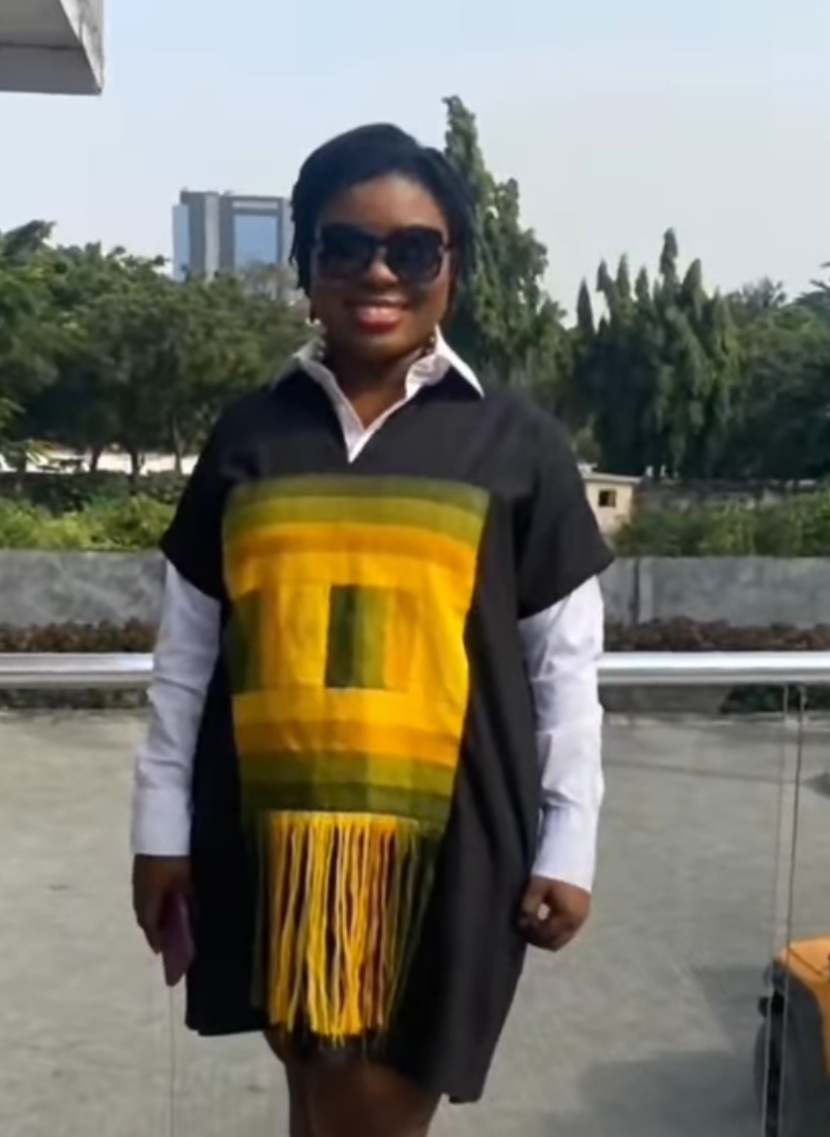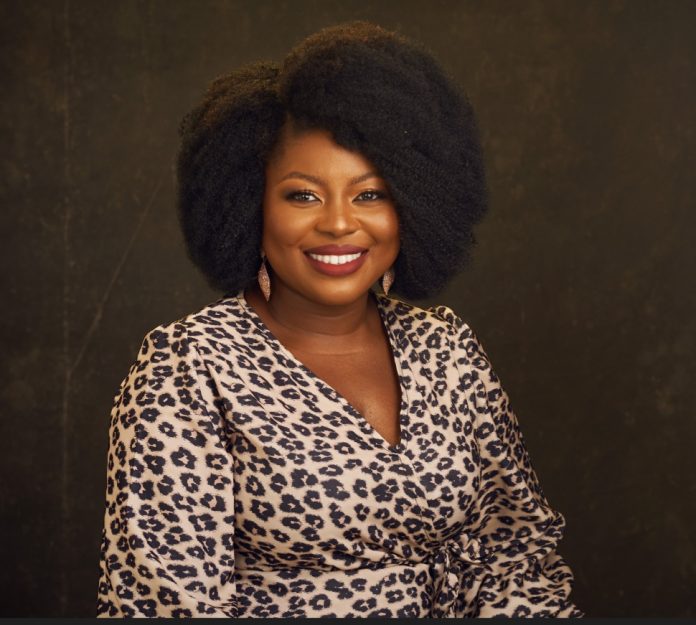Aso-Oke is a handwoven fabric traditionally made by the Yoruba people of Southwestern Nigeria.
It is known for its vibrant colours, intricate patterns, and luxurious texture. Made from locally sourced cotton or silk, aso-oke reflects the artistic prowess of Nigerian weavers who meticulously create these masterpieces on their handlooms.
This traditional fabric holds a rich cultural significance and beauty that have captivated fashion enthusiasts worldwide.

An outstanding woman has emerged as a creative force, blending tradition with modern design by crafting mesmerizing fashion pieces from aso-oke.
Her innovative approach has not only revived interest in this ancient fabric but also celebrates the cultural heritage of Nigeria in a unique and fashionable way.
At the forefront of the aso-oke fashion revolution is 35-year-old Oluwadamilola Agbeke, a talented designer and entrepreneur, inspired by her Nigerian roots and a passion for preserving traditional craftsmanship is redefining the use of aso-oke in contemporary fashion.
Who is Oluwadamilola Agbeke?

I am the Chief Executive Officer of Agbeke Alaso-Oke Designs. I am a native of Osun State but operating from Oyo State in Nigeria.
How did you come about the name ‘Agbeke Alaso-oke’?
Agbeke is my Oriki (a praise name intended to have a stimulating effect on its bearer) given to me by my grandmother. My full name is Joan Oluwadamilola Adu.
When I decided to go into the Aso-Oke business fully, I couldn’t think of a better name than my Oriki, Agbeke.
Can you briefly trace the history of aso-oke?
Aso-Oke originated from the South-West Nigeria in the 15th century by the Yoruba. It began in towns like Iseyin and Oyo and soon spread to neighbouring tribes like Igala, Idoma, Ebira, Tivs with their own Aso-Oke colours.
When precisely did you start the business and how has it fared?
I started in July, 2016 and it’s been very lucrative and rewarding.
What is your educational background and why did you decide to settle for the garment industry?
I am a graduate of Mass Communication from Babcock University. I am also a Public Relations Consultant with over 12 years of experience. When I am not working on an Aso-Oke design, you will find me working on a PR brief.
Aso-Oke originated from the South-West Nigeria in the 15th century by the Yoruba in towns like Iseyin and Oyo and soon spread to neighbouring tribes like Igala, Idoma, Ebira, Tivs with their own Aso-Oke colours.
My decision to settle for the garment industry was borne out of my desire for us as a people to preserve our cultural heritage.
What do you do with Aso-Oke?
I make fashion pieces and accessories using Aso-Oke ranging from sneakers to slippers, handbags to laptop bags, dresses, trousers, sweatshirt sets, joggers and hoodies, key holders, bangles, make-up purse, gele, ipele, buba, iro, fila and agbada among others.
How come we are coming back to the days of Aso-Oke?
I will say we have gotten to the point where we embrace our cultural heritage fully and not let it go into extinction because we want to embrace the western fashion.
Now, more than ever before, Africans want to be identified with their roots by their outlook and how they dress. We have been able to make unique Afro-centric/urban outfits using our Aso-Oke.
What identity does Aso-Oke give?
Aso-Oke gives an African identity. It reminds you of your roots, where you are from. Without having to introduce yourself, once you step into any room wearing any Aso-Oke piece, you stand out. People notice you and will ask about your outfit.
What innovation has gone into making and wearing of Aso-Oke?
Once upon a time, when people mention Aso-Oke, what comes to mind is Gele, Ipele, Buba, Iro, Agbada and Fila for a special occasion.
In recent times, we have seen the re-definition of that notion as aso-oke has evolved into every day wear. We have pieces like bow ties, neck scarf, ear rings, bangles, sneakers, laptop bags, handbags, dresses, shorts, trousers, hoodies, sweatshirts, joggers all made with aso-oke. Now people can comfortably wear an aso-oke piece daily and not wait for special events to wear it.
Aso-Oke gives an African identity. It reminds you of your roots, where you are from, without having to introduce yourself
What category of people patronise you and how is the market outside Nigeria?
Upwardly, mobile people are the kind of customers that patronise me. People who are fashion conscious and at the same time love the African touch.
Aso-Oke business is good both home and abroad, but I have more customers abroad than Nigeria. I have customers in countries like UK, Canada, America and Germany, among others.
What does Aso-Oke mean to the nation’s economy?
Aso-Oke has gone a long way in contributing to our nation’s GDP. Many Nigerians in Diaspora love to associate with their roots by wearing ‘Made-in-Nigeria’ pieces. This commands global appeal. The more sales being made both locally and internationally, the more it contributes to the growth of our nation’s GDP.
How can Nigerians tap into this garment industry and make wealth out of it?
Nigerians can tap into the garment industry by investing more infrastructure and machineries for large-scale production.
Many garment entrepreneurs have resorted to traveling abroad to countries like Italy and Turkey for production, owing to the plight we are faced with in Nigeria, ranging from power, to lack of access to quality raw materials.


